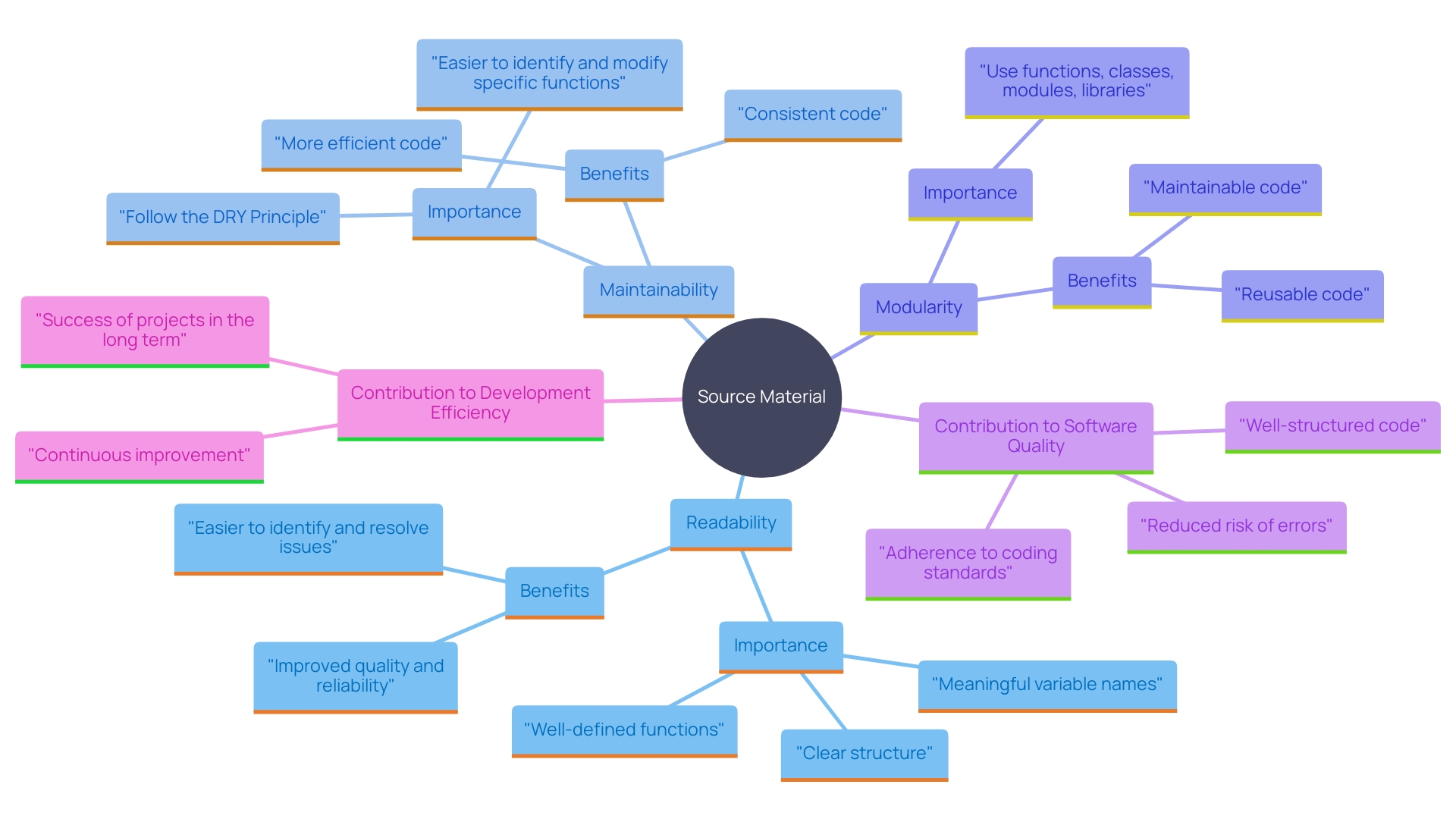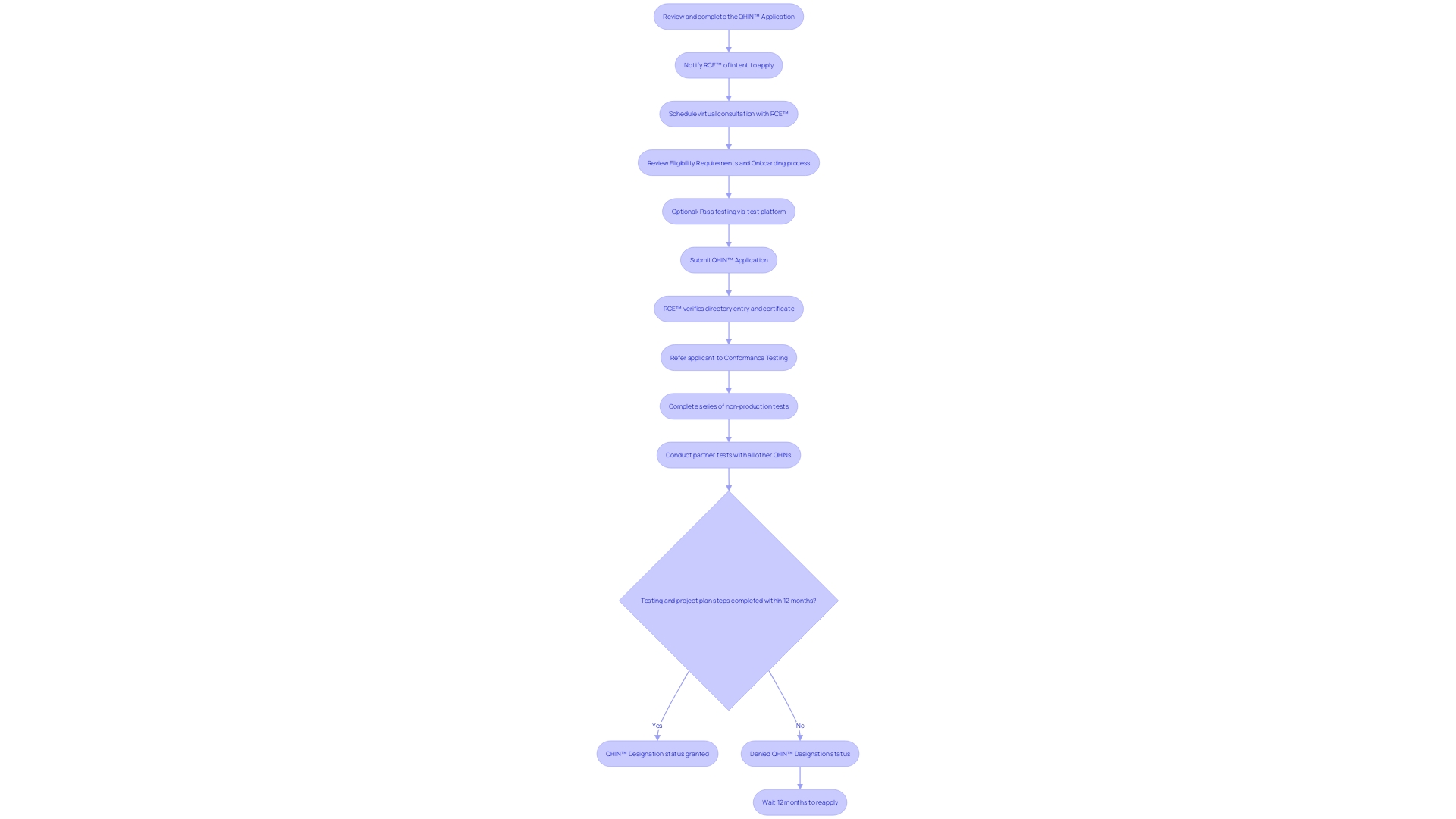Introduction
In the ever-evolving landscape of software development, the cornerstone of creating robust, efficient, and secure applications lies in the meticulous crafting of source code. Source code, comprising human-readable instructions written in various programming languages, is fundamental to defining a program's functionality. This article delves into the essence of source code, exploring its key characteristics such as readability, maintainability, and modularity, which are crucial for sustaining high-quality software development.
Additionally, it highlights the pivotal role source code plays in software projects, from implementing features and fixing bugs to ensuring security and enabling effective collaboration through version control. Through a compelling case study of M&T Bank, the article also sheds light on the practical applications and challenges of source code analysis, underscoring the importance of maintaining clean code standards to enhance performance and safeguard sensitive data. By adhering to best practices in coding, developers can significantly impact the future of software development, achieving maximum efficiency and productivity.
Definition of Source Code
Source text comprises the human-readable instructions written in various programming languages that define a program's functionality. It serves as the cornerstone of software development, enabling developers to construct algorithms and logical sequences to perform specific tasks. Code can be written in languages such as Python, Java, and C++, each boasting unique syntax and semantics. The of source material are vital for ensuring maintainability and scalability. Adopting a modular approach, for instance, which breaks down projects into discrete modules, enhances readability and simplifies testing, as evidenced by the structured design of the Linux kernel. Clean programming is not only functional but also readable, simple, and elegant, making it easier to comprehend and maintain over time, aligning with the principles emphasized in Chapter 1 of 'Clean Code.' Adhering to best practices and remaining informed about quality standards can greatly influence future development, as evidenced by studies showing that developers adjust their programming methods according to the quality of current implementations.
Key Characteristics of Source Code
The key characteristics of source material encompass readability, maintainability, and modularity. is crucial as it guarantees that the program can be effortlessly understood by other developers, facilitating collaboration and future modifications. As highlighted in Chapter 1 of 'Clean Code,' this practice lays the foundation for software craftsmanship, emphasizing that clean programming should be readable, simple, elegant, and minimalistic.
Maintainability emphasizes how easily the software can be modified or updated. In the context of conventional monolithic codebases, maintaining and updating can become increasingly difficult due to the lack of structure and clear boundaries. This leads to high maintenance costs and an increased risk of introducing new bugs. In contrast, maintainable programming simplifies updates without breaking existing functionality, which is crucial for long-term efficiency and productivity.
Modularity, the practice of dividing programs into smaller, manageable units, greatly improves the standard of the software. Modular programming encourages reusability, enabling components to be utilized in various sections of the application, thus conserving time and effort. It also improves scalability, enabling developers to modify or remove functionality without affecting the entire codebase. This approach not only reduces the risk of bugs but also supports effective teamwork by creating clear boundaries between different parts of the application.
By following these principles and practices, developers can ensure that their programs remain robust, scalable, and maintainable, ultimately leading to higher quality applications and more efficient development processes.

The Importance of Source Code in Software Development
Source text is the foundation of software development, functioning as the blueprint for applications. It allows developers to implement features, fix bugs, and enhance functionality. Furthermore, program scripts are essential for version management, allowing groups to monitor modifications over time, work together efficiently, and return to earlier iterations when needed. Its importance extends to security, where well-organized programming can reduce vulnerabilities, making it more challenging for harmful attacks to exploit flaws.
A compelling example of the importance of source health can be seen in the use of to measure the quality of software across 50+ proprietary systems. This data, analyzed through polynomial regression, revealed a non-linear relationship between software health and business impact, demonstrating that even healthy software bases haven't reached their full potential. This emphasizes the importance of preserving high software quality to maximize business value.
Furthermore, the integration of platforms like JFrog and GitHub emphasizes the need for comprehensive security practices. By permitting developers to follow the program from source to binary package, these integrations offer a unified view for managing source materials and binaries, improving security and efficiency.
In today's interconnected digital environment, the exposure of sensitive credentials in publicly accessible materials highlights a critical gap in security practices. As technology keeps advancing, so does our reliance on applications and the code it’s constructed from. Governments and organizations are increasingly acknowledging the necessity for strong security frameworks to safeguard against expensive cyberattacks. This is evident in initiatives like the White House Office of the National Cyber Director's report, which advocates for the adoption of memory-safe programming languages to improve software security.
CEOs and executives recognize that the excellence and safety of the original programming are essential for the future of their enterprises. As Harry Wang of Sonar emphasizes, the quality of programming has become more significant than ever in the AI era. This increasing acknowledgment highlights the essential function that original programming scripts serve in the achievement and longevity of application development.

Case Study: Applications and Challenges of Source Code Analysis
One remarkable case study in source examination involves M&T Bank, a leading full-service U.S.-based commercial bank with a long history of community-focused banking. As the banking sector experiences a significant digital shift, M&T Bank acknowledged the necessity to implement organization-wide to uphold the excellence and performance of its software. By utilizing static analysis tools, M&T Bank sought to enhance software quality and guarantee adherence to strict regulatory standards essential for safeguarding highly sensitive information and transactions.
The static analysis uncovered numerous vulnerabilities and programming issues, which were addressed to significantly improve the application's security stance. However, the process was not without challenges. The results were extremely noisy, with a high false-positive rate, requiring manual review and adjustment of the analysis configurations to ensure accuracy. 'This issue echoed the broader challenge of balancing thorough analysis with the need for efficiency in development processes.'.
This situation highlights the dual nature of source analysis instruments; while they are essential for upholding high quality and secure applications, they also require careful setup and oversight to reduce false positives and guarantee their efficacy. M&T Bank's experience highlights the importance of integrating robust static code analysis practices within the software development lifecycle to achieve optimal results.

Conclusion
The exploration of source code reveals its critical role in software development, serving as the foundation upon which applications are built. The key characteristics of source code—readability, maintainability, and modularity—are essential for ensuring that code remains understandable and manageable over time. By adhering to these principles, developers can create clean, efficient, and scalable software that meets the demands of modern applications.
Moreover, the importance of source code extends beyond mere functionality. It is integral to implementing features, fixing bugs, and enhancing security, making it vital for effective version control and collaboration among teams. As demonstrated through case studies like that of M&T Bank, the health of source code directly correlates with business success and security.
The challenges faced in maintaining code quality highlight the necessity of employing robust practices, such as static code analysis, to safeguard sensitive data and optimize performance.
In conclusion, prioritizing the quality and security of source code not only enhances productivity but also ensures the long-term sustainability of software projects. By embracing best practices and continuously improving coding standards, developers can significantly impact the future of software development, driving innovation and efficiency in an increasingly complex digital landscape.
Frequently Asked Questions
What is source text in programming?
Source text refers to human-readable instructions written in various programming languages that define a program's functionality. It serves as the foundation for software development, enabling developers to create algorithms and logical sequences for specific tasks.
Why is clarity and structure in source material important?
Clarity and structure are vital for ensuring the maintainability and scalability of software. Well-organized code enhances readability, simplifies testing, and allows for easier modifications in the future.
What are the key characteristics of source material?
The key characteristics include: Readability, which ensures that the program can be easily understood by other developers; Maintainability, which refers to how easily the software can be modified or updated without introducing new bugs; and Modularity, which involves breaking down programs into smaller, manageable units to improve reusability and scalability.
How does modularity benefit software development?
Modularity improves the quality of software by allowing components to be reused across different sections of an application. It supports effective teamwork by creating clear boundaries between parts of the application, reducing the risk of bugs.
What role does source text play in version management?
Source text is essential for version management as it allows teams to monitor modifications over time, collaborate efficiently, and revert to earlier iterations when necessary.
How does well-organized programming contribute to security?
Well-organized programming reduces vulnerabilities, making it more challenging for attackers to exploit flaws. Strong security practices are increasingly recognized as vital in protecting sensitive information in applications.
Can you provide an example of the importance of maintaining high-quality source text?
A study analyzing high-resolution data sets across over 50 proprietary systems showed a non-linear relationship between software health and business impact. This indicates that maintaining high software quality is crucial for maximizing business value.
What challenges might arise from using static analysis tools in source examination?
While static analysis tools are essential for improving software quality and security, they may produce a high false-positive rate. This requires manual review and adjustment of configurations to ensure accuracy.
What steps did M&T Bank take to enhance software quality?
M&T Bank implemented organization-wide Clean Code standards and used static analysis tools to uncover vulnerabilities and programming issues, significantly improving their application’s security stance.
Why is clean programming emphasized in software development?
Clean programming should be readable, simple, elegant, and minimalistic, facilitating collaboration among developers and ensuring that programs can be easily understood and maintained over time.




